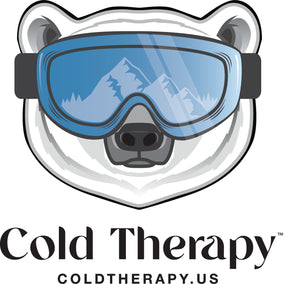
What is the Breg Polar Care Cube?
The Breg Polar Care Cube is a cold therapy system that uses circulating water to cool the skin and underlying tissues. It is a convenient and easy-to-use system that can be used at home.
How does cold therapy speed up healing?
Cold therapy works by constricting blood vessels, reducing inflammation, and numbing pain. This can help to reduce swelling and pain after knee replacement surgery. Cold therapy can also help to improve range of motion and speed up the healing process.
How to use the Breg Polar Care Cube after knee replacement surgery
To use the Breg Polar Care Cube after knee replacement surgery, follow these steps:
- Fill the Polar Care Cube with water and ice.
- Place the Polar Care Cube on your knee and adjust the straps to fit comfortably.
- Turn on the Polar Care Cube and set the desired temperature.
- Use the Polar Care Cube for 20-30 minutes at a time, several times a day as directed by your physician.
How often should you use the Breg Polar Care Cube?
You can use the Breg Polar Care Cube as often as you need to for pain relief and to reduce swelling. However, it is important to not use the Polar Care Cube for more than 20-30 minutes at a time, as this can cause skin damage. Always check with your physician. The cube ice machine should not be used continuously throughout the day or night.
What are the benefits of using the Breg Polar Care Cube after knee replacement surgery?
There are many benefits to using the Breg Polar Care Cube after knee replacement surgery, including:
- Reduced pain and swelling
- Improved range of motion
- Faster healing
- Decreased risk of complications
- Improved quality of life
Fast Scientific Facts
A number of studies have shown that cold therapy can be effective in reducing pain and swelling after knee replacement surgery.
For example, a study published in the Journal of Arthroplasty: https://www.arthroplastyjournal.org found that cold therapy was effective in reducing pain and swelling in patients who had undergone total knee replacement surgery. The study also found that cold therapy improved range of motion and function in these patients.
Another study, published in the Journal of Orthopaedic & Sports Physical Therapy: https://www.jospt.org, found that cold therapy was effective in reducing pain and swelling in patients who had undergone partial knee replacement surgery. The study also found that cold therapy improved range of motion and function in these patients.
After Knee Surgery Conclusion
The Breg Polar Care Cube is a safe and effective way to use cold therapy to speed up healing after knee replacement surgery. It is easy to use and can be used at home. If you are considering using the Breg Polar Care Cube, talk to your doctor to make sure it is right for you.
Contraindications i.e. Who is the Breg Polar Care Cube NOT for.
Here are some common contraindications and precautions associated with cold therapy devices like the Breg Polar Care Cube:
-
Cold Sensitivity: Individuals who have a known sensitivity to cold temperatures should use cold therapy devices with caution. Extreme cold can cause skin damage and discomfort in such cases.
-
Peripheral Vascular Disease: Patients with conditions like peripheral arterial disease (PAD) may have compromised blood circulation to the extremities. Cold therapy can further reduce blood flow, potentially exacerbating the condition. Consultation with a healthcare provider is essential in such cases.
-
Hypertension: Cold therapy can temporarily increase blood pressure. Patients with uncontrolled high blood pressure (hypertension) should consult their healthcare provider before using cold therapy devices.
-
Raynaud's Disease: Individuals with Raynaud's disease, a condition characterized by exaggerated responses to cold or emotional stress, may experience discomfort with cold therapy. A healthcare provider should provide guidance on the use of cold therapy in such cases.
-
Allergies or Skin Conditions: Patients with allergies to materials used in the device or those with pre-existing skin conditions should consult their healthcare provider before using cold therapy devices.
-
Open Wounds or Infections: Cold therapy should not be applied to open wounds or areas with active infections, as it may hinder the body's natural healing process or introduce the risk of further infection.
-
Neuropathy: Individuals with neuropathy (nerve damage) should use cold therapy with caution, as they may have reduced sensation and may not perceive discomfort or skin damage.
-
Cryoglobulinemia: Patients with cryoglobulinemia, a rare condition characterized by abnormal proteins that precipitate at cold temperatures, should not use cold therapy devices without consulting their healthcare provider.
Please note that these are general guidelines, and specific contraindications may vary depending on the patient's medical history, the type of surgery or injury, and the advice of their healthcare provider. It is crucial to consult with a healthcare professional before using the Breg Polar Care Cube or any cold therapy device to ensure safe and appropriate usage.
Additionally, you should refer to the device's user manual and guidelines for detailed information on contraindications and precautions.
References
- Leegwater, NC et al. Cryocompression Therapy After Elective Arthroplasty of the Hip. Hip International. 2012;22(2):189-194.: https://pubmed.ncbi.nlm.nih.gov/23112075/
- Su E.P et al. A Prospective, Multi-Center, Randomized Trial To Evaluate the Efficacy of a Cryopneumatic Device on Total Knee Arthroplasty. Journal of Arthroplasty. 2017;32(6):1902-1908.: https://pubmed.ncbi.nlm.nih.gov/23118406/
- Murgier J., Cassard X. Cryotherapy With Dynamic Intermittent Compression For Analgesia After Anterior Cruciate Ligament Reconstruction. Preliminary Study. Orthopaedics and Traumatology Surgery and Research. 2014;100(7):833-837.: https://pubmed.ncbi.nlm.nih.gov/24679367/

